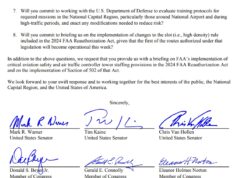Tomorrow, a committee vote is expected to take place on controversial legislation introduced by Del. Scott Lingamfelter that would block localities in the Commonwealth who do not presently use red light cameras from deploying them in future.
This is a topic discussed in a previous post, and about which there has been much debate over the past few days. While red light cameras are often talked about as a controversial issue, the data demonstrates that they actually are not; polls show that large majorities of Americans back their use, and with good reason: A just-released Insurance Institute for Highway Safety study demonstrates that these cameras save lives. Indeed, even in D.C., where popular lore indicates that they are wildly unpopular, an AAA survey of D.C. drivers from December demonstrated that only 8 percent opposed their use.
Last week, numerous opponents of Lingamfelter's legislation ranging from local and county officials to insurers and the AAA Clubs of Virginia testified against it. Delegates should hear those voices and leave discretion as to use of cameras at the local, not state, level, where those most intimately aware of persistent public safety circumstances and most in touch with local residents can install cameras, or not, after weighing public sentiment and their potential utility in combating dangerous driving. Some places, like Falls Church, will see merit in using them. Others, like Roanoke, will not. But as their city manager said, “Really, red light cameras are a good solution in many instances”; Delegates should not be imposing a top-down rule that could have significant local governance and public safety implications.



 Sign up for the Blue Virginia weekly newsletter
Sign up for the Blue Virginia weekly newsletter

![Rep. Don Beyer (D-VA08) on “reports of the devastating effects Donald Trump’s Project 2025 agenda would have on [Metro]”](https://bluevirginia.us/wp-content/uploads/2024/10/trumpmetro-238x178.jpg)






